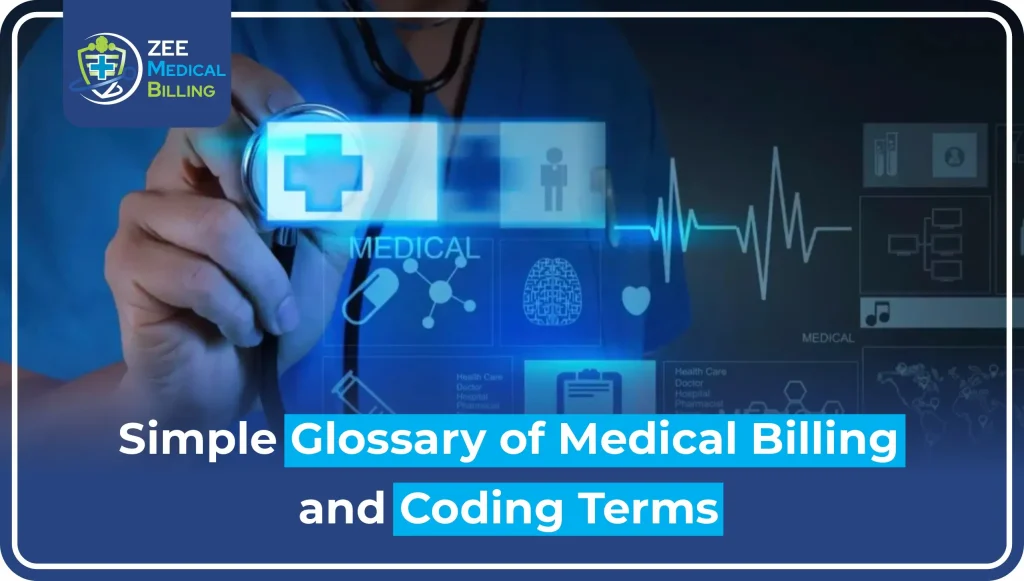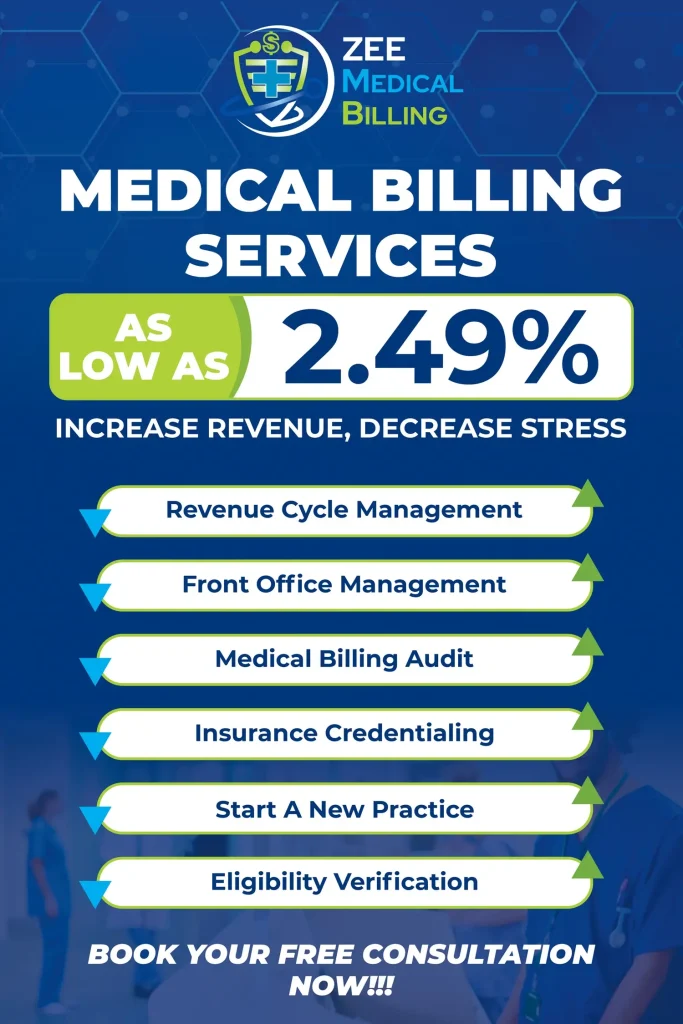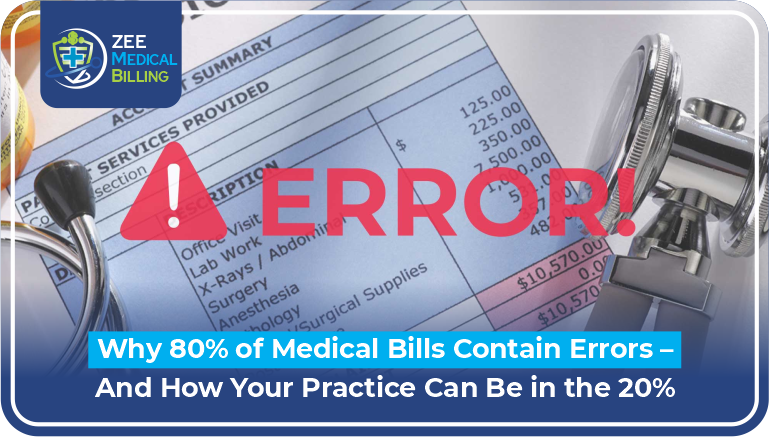If you are new to healthcare or trying to understand your medical bills, it is important to learn medical terms. These terms are not just industry jargon. They help clarify processes, explain charges, and ensure clear communication between providers, insurers, and patients.
This simple glossary explains important medical billing and coding terms in easy language. The text provides examples that show how and when each term is used.
Common Medical Billing and Coding Terms
1. Explanation of Benefits (EOB)
- A document from the insurance company shows the billed amount, the covered amount, the patient’s debt, and any changes. It’s not a bill, but it helps track claims.
Example: If you had a check-up, the EOB will show what your doctor charged. The statement will also show how much the insurance paid and any balance you may still owe.
Also Read: What Is a Superbill in Medical Billing? Full Guide
2. Current Procedural Terminology (CPT)
- CPT codes are numeric codes used to describe medical, surgical, and diagnostic services. They regularly bill insurance companies.
Example: Code 99213 might represent a 15-minute office visit with an established patient.
3. ICD-10 Code
- This stands for the International Classification of Diseases, 10th Revision. It identifies diagnoses and health conditions for billing and tracking.
Example: J20.9 refers to unspecified acute bronchitis.
4. Modifier
- A two-character code was added to CPT codes to provide additional information about the service.
Example: Modifier -59 shows that procedures were distinct and performed separately.
5. Deductible
- The amount a patient must pay out-of-pocket before insurance coverage begins.
Example: If your plan has a $500 deductible, you must pay that amount first. Then, your insurer will cover the cost of services.
6. Co-pay
- A fixed amount that a patient pays at the time of service.
Example: You might pay a $20 co-pay for a primary care visit.
7. Coinsurance
- A percentage of the cost the patient pays after the deductible is met.
Example: With 20% coinsurance, you pay $20 for a $100 service.
8. Prior Authorization
- Approval from an insurance company is required before a service is provided.
Example: Some insurance companies require prior authorization for certain MRIs before they cover them.
9. Provider
- Any healthcare professional or facility that delivers medical services.
Example: Your doctor, hospital, or clinic is a provider.
10. Claim
- A request submitted to the insurance company for payment of services.
Example: After your visit, your provider sends a claim to your insurer.
Usage Table: Billing Terms in Real Life
| Billing Term | Used For | Example Scenario |
| CPT Code | Procedure documentation | Office visit, lab test |
| ICD-10 Code | Diagnosis explanation | Diabetes, flu, fracture |
| EOB | Insurance communication | Post-treatment billing summary |
| Deductible | Patient responsibility before coverage | Annual threshold before coverage kicks in |
| Coinsurance | Shared cost after deductible | Paying 20% of a covered service |
More Essential Medical Billing Glossary Terms
11. Adjustment
- A portion of the bill that a provider agrees not to charge, usually because of insurance agreements.
12. Appeal
- A request to review a denied or underpaid claim.
13. Bundling
- When multiple services are combined into a single payment.
14. Charge Capture
- Record all services provided so you can bill them.
15. Clearinghouse
- A third-party entity that reviews, formats, and submits claims to payers.
16. Downcoding
- When a submitted claim is reimbursed at a lower level because of insufficient documentation.
17. Fee Schedule
- A list of rates agreed upon between providers and insurers for specific services.
18. HIPAA
- Health Insurance Portability and Accountability Act (HIPAA) – ensures patient data privacy and confidentiality.
19. Out-of-Network
- A provider not contracted with your health plan may result in higher costs.
20. Remittance Advice (RA)
- Detailed payment explanation from insurers to providers about a claim.
Tips for Learning Medical Billing Terms
- Group terms by category (payments, codes, claims) to simplify learning.
- Review real-world documents, such as EOBs and sample claims.
- Use flashcards or cheat sheets to help you memorize CPT and ICD-10 codes.
- Stay updated: Policy updates can change billing terminology.
FAQs
1. What are CPT and ICD-10 codes used for?
CPT codes describe the procedures or services provided, while ICD-10 codes explain the patient’s diagnosis. Both are essential for proper billing and insurance reimbursement.
2. Why is my Explanation of Benefits not a bill?
An EOB is just a summary of how your insurance processed a medical claim. It outlines what you paid and what you may owe, but the provider issues the actual bill.
3. What’s the difference between deductible, co-pay, and coinsurance?
A deductible is an amount you pay before your coverage begins. A co-pay is a flat fee you pay for services. Coinsurance represents your share of the cost after you meet the deductible, and it typically appears as a percentage.
4. What happens if I use a provider who is not in my network?
You may face higher out-of-pocket costs. Insurance often covers less or none of the bill when providers are out-of-network.
5. How do I appeal a denied insurance claim?
You can send a written appeal to your insurance company. Include documents that explain why the service should receive coverage. Often, a time limit for filing exists, so act quickly.
Final Thoughts
Understanding this simple glossary of medical billing terms helps make healthcare and insurance interactions less confusing. Whether you’re a patient, new medical staff, or studying for certification, knowing these medical billing and coding terms boosts clarity and confidence.
As the industry changes, knowing new medical billing terms helps with accurate billing. This leads to fewer claim errors and better communication.
Need Expert Medical Billing Services?
Zee Medical Billing provides professional billing solutions tailored to healthcare providers across the United States. In addition to offering top-tier support from our main office, we proudly serve clients in Illinois, Indiana, California, Kentucky, New York, Washington, Georgia, Alabama, South Carolina, Texas, Pennsylvania, Ohio, New Hampshire, Nevada, Massachusetts, Hawaii, Arizona, and Colorado! Whether you’re looking to streamline your revenue cycle or improve claims accuracy, you can reach out to us to learn more about how we can support your practice.









